Rob Bignell's Blog, page 347
January 13, 2014
Maintain sense of tension through pace
As developing 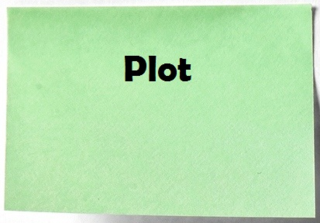 your story, maintaining a sense of tension is vital. Without dramatic tension – a feeling of uncertainty in the reader about how the main character will solve (or even if he will resolve) the central problem – the story will be flat and vanilla.
your story, maintaining a sense of tension is vital. Without dramatic tension – a feeling of uncertainty in the reader about how the main character will solve (or even if he will resolve) the central problem – the story will be flat and vanilla.
Creating tension involves controlling the story’s pace. Pace is the timing by which the major events in the plot unfold and in which the big scenes are shown.
The “better” the story, then the better that the author handled the pace. Douglas Adams’ comedic novel “The Hitchhiker’s Guide to the Galaxy” and Ray Bradbury’s short story “A Sound of Thunder” are examples of masterful pacing in science fiction.
Every story has a different pace. Those that are more introspective tend to move at a slower pace while those that are action-packed tend to be fast. Because of this, all stories run on a “story clock”. This is a measurement in which action is internally described. As with the wider universe, however, there is no objective clock. A true sign of craftsmanship is when an author sets the story clock winding at the right pace for an individual tale.
Regardless of the story, however, good pacing always involves compression and expansion of time - In a story, events don’t unfold at the same rate as they do in real time. For example, a suborbital flight from New York to Tokyo in real time might take an hour, but in the story it’s handled in a phrase that takes a couple of seconds to read. Usually the author speeds up or slows down the action to match the emotions he wants the reader to have.
Another aspect of good pacing is “travel time.” Characters don’t change their personalities or their minds about important decisions overnight. A character must “travel” a certain emotional distance to arrive at such changes. The author’s wording and dramatic action must mirror that pace.
Of course, you have only so many words to tell a story, so reducing that “travel time” is important. There are a few ways you can accomplish that without cheating on the emotional distance that a character must traverse:
g Intercut a different story - Sometimes a parallel story or subplot can help lead the character to change more quickly because he realizes, through analogy, that he must change.
g Fill intervening time with straight action - A change often doesn’t occur because one has thought through a problem but because physical experiences test and uncover what one truly believes. Straight action can be a crucible that helps the character come to a new understanding.
g Develop other characters - As with a parallel story or subplot, other characters who undergo change can affect the protagonist. Their changes can test and alter the protagonist’s beliefs.
g Offer description - Changes in the landscape and climate can symbolically represent the emotional currents in the protagonist’s thinking.
Need an editor? Having your book, business document or academic paper proofread or edited before submitting it can prove invaluable. In an economic climate where you face heavy competition, your writing needs a second eye to give you the edge. I can provide that second eye.
Amazon.com WidgetsRelated articles
 Ensure descriptive writing serves a purpose
Ensure descriptive writing serves a purpose Use broad conflict to set your story in motion
Use broad conflict to set your story in motion
January 12, 2014
Five Quotes About Where Stories Come From
“Everybody walks past a thousand story ideas every day. The good writers are the ones who see five or six of them. Most people don't see any.” – Orson Scott Card 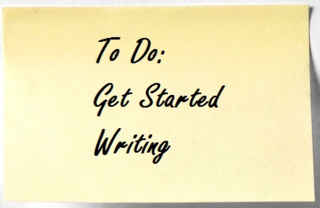
“...everything in life is writable about if you have the outgoing guts to do it, and the imagination to improvise. The worst enemy to creativity is self-doubt.” – Sylvia Plath
“Most of the basic material a writer works with is acquired before the age of fifteen.” – Willa Cather
“Writers write about what obsesses them. You draw those cards. I lost my mother when I was 14. My daughter died at the age of 6. I lost my faith as a Catholic. When I'm writing, the darkness is always there. I go where the pain is.” – Anne Rice
“If you look at anything long enough, say just that wall in front of you – it will come out of that wall.” – Anton Chekhov
Need an editor? Having your book, business document or academic paper proofread or edited before submitting it can prove invaluable. In an economic climate where you face heavy competition, your writing needs a second eye to give you the edge. I can provide that second eye.
January 11, 2014
Coming up with great story ideas
A common 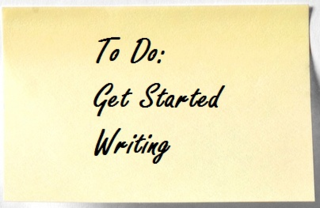 question of writers is “Where do you come up with your ideas?” There’s no simple answer – ideas for stories come to writers in a number of ways. There’s no easy step-by-step process for developing good ideas.
question of writers is “Where do you come up with your ideas?” There’s no simple answer – ideas for stories come to writers in a number of ways. There’s no easy step-by-step process for developing good ideas.
Fortunately, there are some ways you can pump the imagination to get ideas flowing. Many good writers use these “tricks” that ensure their imagination never goes dry:
g Observe the world – Many ideas come from noticing peculiar aspects of people’s behavior or oddities in how the world works.
g Get curious about other people and things – Science fiction writers, for example, are particularly curious about people and things as related to science, and specifically about the effects of change, usually caused by advances in science.
g Explore your world – You can discover the world either by actual adventure or vicariously by reading (and then through a diversity in reading materials, meaning don’t limit yourself to only those genres you enjoy – for example, don’t read only crime nonfiction if writing mysteries).
g Create maps of imaginary places – Draw coastlines, mountains, cities, nations or star lanes, then develop a story around them.
g Distill conflicts into lists – What are incompatible desires and aims that someone could experience? Then match it to an appropriate “What if?” (a situation that aggravates or accentuates conflict).
g Fictionalize yourself in an unresolved situation that someone else faces – How would you resolve the problem?
g Find conflicts in everyday life – Look at the problems those around you are going through and have your characters resolve them in their universe.
g Place a person you know in a different setting – For example, place an urbanite on a Southern farm or a school janitor in a corner office of a high-tech firm. How does their lifestyle and view on life change? You now have a character and a setting. Next, imagine that a problem occurs, upsetting their routine. You now have a plot.
Remember, there’s nothing wrong with letting ideas ripen for months or years if necessary. But never forget that ultimately to be a writer, you must write. Even writing a story around what you consider a “bad idea” is better than never writing at all.
Need an editor? Having your book, business document or academic paper proofread or edited before submitting it can prove invaluable. In an economic climate where you face heavy competition, your writing needs a second eye to give you the edge. I can provide that second eye.
Amazon.com Widgets
Related articles
 How do you know when your book is done?
How do you know when your book is done? Five Great Quotations about Why We Must Write
Five Great Quotations about Why We Must Write Five Great Quotations about the Power of Writing
Five Great Quotations about the Power of Writing Five Great Quotations about Business of Writing
Five Great Quotations about Business of Writing Use broad conflict to set your story in motion
Use broad conflict to set your story in motion
January 10, 2014
Marketing Tip: Exploit Your “Local” Status
One of  your biggest selling points, especially if a novelist, is that you’re “local.” While that can only take you so far, you’d be foolish not to fully exploit it. A lot of businesses and institutions “local” products or those about their region. Among them:
your biggest selling points, especially if a novelist, is that you’re “local.” While that can only take you so far, you’d be foolish not to fully exploit it. A lot of businesses and institutions “local” products or those about their region. Among them:
g Libraries
g Tourism bureaus and historical societies
g Gift shops
g Book stores
g Stores related to you book’s topic (If you’re book is book hiking, why not get a local outfitter to carry it?)
g Bed and breakfasts
Simply approach the manager of the business or institution about carrying your books. Offer to give them a percentage of the sale with you providing the books. Mom-and-pop or locally-owned stores usually are the most interested. And don’t forget that local newspapers and radio stations almost always are interested in press releases about local authors
Need an editor? Having your book, business document or academic paper proofread or edited before submitting it can prove invaluable. In an economic climate where you face heavy competition, your writing needs a second eye to give you the edge. I can provide that second eye.
Amazon.com Widgets
Related articles
 Editing client publishes near-future novel
Editing client publishes near-future novel How long and frequent should author's blog be?
How long and frequent should author's blog be? Why you want an LCCN for your book
Why you want an LCCN for your book Editing client publishes first fantasy novel
Editing client publishes first fantasy novel Making sense of sensuous vs. sensual
Making sense of sensuous vs. sensual
January 9, 2014
How to link your ebook’s table of contents
When reading 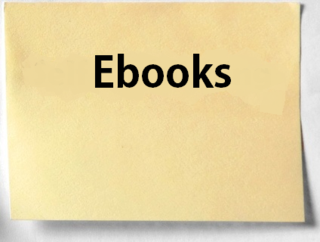 a paperback, the table of contents gives you page numbers so that you can easily locate each chapter. Ebooks don’t have page numbers, but you can set up links in its table of contents so that with the tap of a screen, readers can go directly to the beginning of that chapter.
a paperback, the table of contents gives you page numbers so that you can easily locate each chapter. Ebooks don’t have page numbers, but you can set up links in its table of contents so that with the tap of a screen, readers can go directly to the beginning of that chapter.
Creating a linked table of contents is fairly easy, albeit tedious. Indeed, a table of contents in book with 50 chapters can require up to an hour to set up. Taking the time to create a linked table of contents, however, is worth the effort, especially if you’ve written nonfiction. As well as making the reading experience easier, it indicates a level of sophistication that carries over to acceptance of your text’s validity. So put on your headphones, listen to your favorite tunes, and prepare to get into rhythm.
If using Microsoft Word, follow these steps to create a linked table of contents:
g On the document that will be your ebook, write a table of contents devoid of page numbers.
g Copy and paste this table of contents to a Notepad document. Delete any spaces between the letters and all punctuation marks. For example, “Chapter 1: Conflict” would look like “Chapter1Conflict”.
g Set up your screen so that you can see both the Word document that will be your ebook and the Notepad document.
g Go to the Word document that will be your ebook. Scroll down your text to the first item that your table of contents listed (We’ll presume it’s “Chapter 1”). Click the cursor before its header.
g In the command ribbon, click “Insert”. Then at the center of the new ribbon, under “Link”, click “Bookmark”.
g A pop-up window will appear. From your Notepad document, copy the corresponding line (In our case, this would be “Chapter1Conflict”) and paste it in the window below “Bookmark name:”. Click “Add”. You have now bookmarked a spot in your text.
g Staying on your Word document, scroll back up to the table of contents. Highlight all of the words that make up the first line in your table of contents (or “Chapter 1: Conflict”).
g In the command ribbon under “Link”, click “Hyperlink”. A pop-up window will appear; on its left side, under “Link to”, click “Place in this document”.
g The window at the center will change to list all the bookmarks you’ve made. Locate the wording that corresponds with this line in your table of contents, click it, and then hit “OK” at the lower right of the pop-up window.
g Returning to the Word document that is your ebook, you’ll see that the wording in your table of contents is now in blue and underlined. It is hyperlinked to the bookmarked spot in your document.
Click the link to see if it takes you there. If it does, repeat the steps above for the next line in your table of contents. If it doesn’t work, that means either it wasn’t bookmarked or hyperlinked properly.
After you’ve bookmarked and hyperlinked a couple of chapter titles so that you’re familiar with the steps, you can speed up the process by making all of your bookmarks then going back and hyperlinking all of them. This saves you the trouble of scrolling back and forth between the bookmarked spot and the table of contents.
Always test your hyperlinks. Making a mistake is very easy to do, and don’t want one to appear in print. Should you make a mistake, simply highlight the hyperlink and bookmark it; before doing so, you may need to place the bookmark in the correct spot.
This same process can be used to create other bookmarks in your ebook. For example, if writing a travel guidebook, you might provide a list of must-see sights. The sights in the list could be hyperlinked back to the spot in the book where they are fully described.
Need an editor? Having your book, business document or academic paper proofread or edited before submitting it can prove invaluable. In an economic climate where you face heavy competition, your writing needs a second eye to give you the edge. I can provide that second eye.
Amazon.com WidgetsRelated articles
 How to format line spacing for an ebook
How to format line spacing for an ebook How to come up with an awesome story title
How to come up with an awesome story title
January 8, 2014
Don’t scam your readers: Rip-off vs. rip off
Don’t 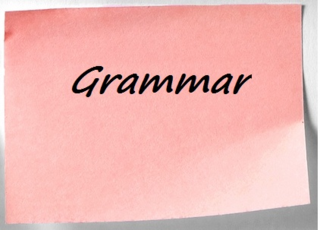 swindle your readers out of a good reading experience by getting these two words wrong.
swindle your readers out of a good reading experience by getting these two words wrong.
Rip-off is a noun meaning that a deal is unfair or a scam: Aunt Janie knew the purse’s cheap quality made it a rip-off given the high cost.
Rip off (without a hyphen) is a verb in which you steal from someone: The scammer used a bogus ad on Craigslist to rip off the unsuspecting buyer by taking his money but delivering no services.
The easy way to remember the difference is that the noun takes a hyphen. The verb doesn’t have one (because it was stolen, no doubt!).
Need an editor? Having your book, business document or academic paper proofread or edited before submitting it can prove invaluable. In an economic climate where you face heavy competition, your writing needs a second eye to give you the edge. I can provide that second eye.
Amazon.com Widgets
Related articles
 Making sense of sensuous vs. sensual
Making sense of sensuous vs. sensual Time to get it right: Past vs. passed
Time to get it right: Past vs. passed Which to choose? Pickup vs. pick-up vs. pick up
Which to choose? Pickup vs. pick-up vs. pick up
January 7, 2014
Strive for originality when penning fiction
When writing 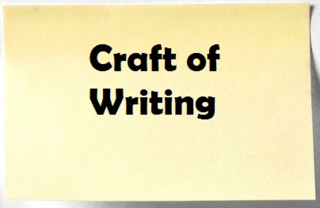 fiction, you want to be original; that is, your plot, characters, setting and ideas should be fresh or novel (no pun intended).
fiction, you want to be original; that is, your plot, characters, setting and ideas should be fresh or novel (no pun intended).
After all, to some degree, you decided to start writing because you had something to tell the world. This need not be some deep philosophical idea but could also be how you say it, such as being able spin the proverbial good yarn. If you started writing to simply retell others’ ideas and storylines, you’re only being imitative and are not much different than a painter who follows the master’s style. You may be skilled at replicating the master’s style, but you’ll always be in the master’s shadow.
Of course, as the old saying goes, “There’s nothing new under the sun,” so at least to some degree, your story cannot be entirely original. Many genres, for example, have conventions and structures that readers expect.
You also can “borrow” concepts from other writers – sometimes. Ideas or themes always may be used. However, discussing an idea or theme doesn’t allow you to use another writer’s wording; once you do that, you’re guilty of plagiarism.
Further, sometimes terms another writer uses can be adopted while at other times they can’t. The term can be borrowed if it’s in common usage, like “ray gun” and “space suit”; in fact, several writers have used the same term, and most people who aren’t science fiction readers know what they mean. But you’re being unoriginal and possibly violating copyright when you use ideas specific to an author or series; for example, “phaser” says “Star Trek” and “ego-likeness” says Frank Herbert’s “Dune.”
You also can still retell old stories, such as myths, legends and fairy tales. When doing so, however, give it your own sensibility. For example, what makes Robin Hood an interesting character in modern terms? Build on the tale, adding twists to it and making it relevant to modern readers. In addition, when retelling old stories, give it your own voice. For example, you wouldn’t tell “King Arthur” using the same diction as Geoffrey of Monmouth.
Need an editor? Having your book, business document or academic paper proofread or edited before submitting it can prove invaluable. In an economic climate where you face heavy competition, your writing needs a second eye to give you the edge. I can provide that second eye.
Related articles
 Five Great Quotations about the Power of Writing
Five Great Quotations about the Power of Writing Make science fiction 'others' relevant to readers
Make science fiction 'others' relevant to readers Fourth writing guidebook hits store shelves
Fourth writing guidebook hits store shelves Five basic elements make up a story
Five basic elements make up a story
January 6, 2014
Basic guidelines for devising cliffhangers
One of  the best ways to create suspense in a novel is to use a cliffhanger. This is a “mini-ending” in which the main character is stuck in some new, worse predicament at the end of a chapter than during the previous few pages. For example, while being chased, the character may slip over the edge of a cliff and though able to catch hold of the edge, that situation is worse than before; he’ll either fall to his death when his fingers lose their grip or the baddies will stomp on his knuckles and cause him to fall.
the best ways to create suspense in a novel is to use a cliffhanger. This is a “mini-ending” in which the main character is stuck in some new, worse predicament at the end of a chapter than during the previous few pages. For example, while being chased, the character may slip over the edge of a cliff and though able to catch hold of the edge, that situation is worse than before; he’ll either fall to his death when his fingers lose their grip or the baddies will stomp on his knuckles and cause him to fall.
When writing a cliffhanger, follow these basic guidelines:
g The predicament must naturally flow from the plot – The cliffhanger never should be contrived. For example, if the main character was being chased across the prairie, there probably isn’t a cliff for him to slip off. He might step into a prairie dog hole, however, and break his ankle.
g Switch to an alternate cast in the next chapter – While not required, you can maximize the suspense by having the next chapter focus on other characters. For example, perhaps the main character has friends looking for him. The chapter following the cliffhanger would focus on these friends and their efforts.
g Avoid making the cliffhanger too easy to solve – Instead, build on the suspense by having the main character risk something to get out of his predicament. Rather than having the baddies be dolts who don’t realize that the main character is hanging on for his life, instead have him deliberately jump to a ledge below, on which he can duck under an overhang and hide until his friends arrive. The baddies will think the main character fell to his death.
Need an editor? Having your book, business document or academic paper proofread or edited before submitting it can prove invaluable. In an economic climate where you face heavy competition, your writing needs a second eye to give you the edge. I can provide that second eye.
Amazon.com Widgets
Related articles
 When should you start a new novel chapter?
When should you start a new novel chapter? Delete nulls from your novel, short story
Delete nulls from your novel, short story Use broad conflict to set your story in motion
Use broad conflict to set your story in motion Delete bogus alternatives from your story
Delete bogus alternatives from your story Constructing your story's main character
Constructing your story's main character
January 5, 2014
Avoid using real product names in novels
This blog post originally was written for and appeared at Eat Sleep Write.
If thinking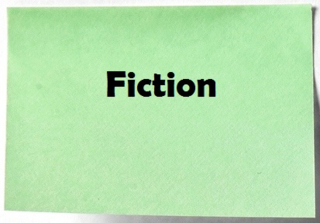 about using names of real products in your story, you may want to reconsider. Why?
about using names of real products in your story, you may want to reconsider. Why?
Product names date the manuscript. Soap, for example has been around a long time (and hopefully will be around for a long to come!), but many brand names have come and gone. So why not just say “soap” rather than risk creating in your readers a moment of confusion about what you mean? Of course, the exception is when you set the story in the past; then you may want to use brands popular at that time – such as Brylcreem, Sun Records, and RCA television sets for the mid 1950s. Doing so helps transport the reader to that time period.
Using product names also can lead to a bad legal situation. Suppose that your fictional story involves a car company’s execs covering up engineering flaws in their vehicles that can result in fatalities. If you make General Motors your car company, than you portray that corporation in a bad light, even if you state on your title page that this book is a work of fiction. Writing a nonfiction expose is one thing, but if penning fiction, why not simply make up a company name, such as “National Motors”?
A product name also can show how much you don’t know about a product. Suppose you use “Kindle” instead of “ereader”. Now, if you use iBook, you may end up describing the Kindle as if it were an iBook. Being generic allows you to play it safe, as you can give your device characteristics and abilities that neither the Kindle nor the iBook may have
If you do use a product name in your story, make sure you get the spelling and capitalization right. Many product names are a play on words. After all, is it Jello, jello, Jell-O or Gello? Get it wrong, and some readers who know better will take notice...and that’s not exactly what you want readers to pay attention to. You may need to do a little research, but a minute or two typing the product name into a search engine will quickly yield results.
Finally, you don’t need to include the trademark symbol in your writing, regardless if it is fiction or nonfiction. Trademarks are intended to prevent other entrepreneurs from releasing a product with the same or similar name. Corporations like to include the TM on their documents as a sort of warning shot to competitors that might unscrupulously try to exploit that product’s name and to offer evidence that they are protecting their trademarked or registered name. In any case, all of those TMs and circled R’s to show that a product name is trademarked turns a story into alphabet soup. They are extremely distracting when reading.
Need an editor? Having your book, business document or academic paper proofread or edited before submitting it can prove invaluable. In an economic climate where you face heavy competition, your writing needs a second eye to give you the edge. I can provide that second eye.
Related articles
 Writers can blog about variety of topics
Writers can blog about variety of topics Editor's sixth 'Hittin' the Trail' book released
Editor's sixth 'Hittin' the Trail' book released
January 4, 2014
Downgrade your minor characters
Not all 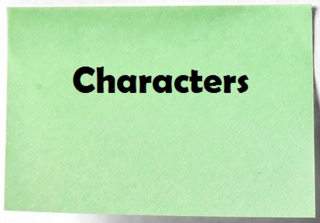 characters in your story are created equal. Some are of the utmost importance while some are fairly insignificant.
characters in your story are created equal. Some are of the utmost importance while some are fairly insignificant.
The most important characters are the ones who face and overcome a number of serious problems and obstacles in a story. They are called major characters. In Antoine de Saint-Expiry’s “The Little Prince,” they would be the Little Prince and the boy narrator. In “The Godfather” (both novel and movie), they would be Don Vito Corleone and his sons Michael and Sonny.
In contrast, minor characters face few obstacles and often none at all. Because of this, minor characters have few lines of dialogue and usually appear only incidentally. They are part of the background, necessary for advancing the plot and giving the story a semblance of reality, but they are not who the story is about. In “The Little Prince,” they would be the fennec fox, railway switchman, and the merchant. In “The Godfather,” they would be the singer Johnny Fontana, the henchman Luca Bras, and Connie's husband Carlo Rizzio.
Developing all of your story’s characters isn’t necessary. In fact, the fewer you develop the better, especially if writing a short story or novella. This allows the reader to focus on a single character (or small band of characters) who must overcome the story’s central problem.
At the same time, don’t skimp on minor characters if they’re needed in your story. The tale about the scientist professor making a startling but dangerous discovery probably needs to include a research assistant, department secretary, and bored students. There’s nothing wrong with including these side players. Just make sure they seem real (that is, they shouldn’t be stereotypes) and that they don’t attract the reader’s attention too much.
Need an editor? Having your book, business document or academic paper proofread or edited before submitting it can prove invaluable. In an economic climate where you face heavy competition, your writing needs a second eye to give you the edge. I can provide that second eye.
Amazon.com Widgets
Related articles
 Make story interesting by establishing stakes
Make story interesting by establishing stakes Avoid shifting point of view in your story
Avoid shifting point of view in your story Five Great Quotations about Characters
Five Great Quotations about Characters Constructing your story's main character
Constructing your story's main character



